MLB history: Lessons learned during the previous MLB lockout in 1990


The last time there was a labor stoppage in MLB was in 1994, when the MLBPA went on strike from August 11, 1994 through April 2, 1995. However, that was a strike, so it is a little bit different than what MLB is currently going through with a lockout.
A strike is when the workers (in this case, the players) decide to stop working. A lockout is when the employer (in this case, the MLB owners) decides to stop labor until a new agreement for labor is agreed upon. The latter has not happened in MLB since 1990 and the 2021-2022 MLB lockout could unfold much like the 1990 MLB lockout.
The 1990 MLB lockout is something that can be learned from
The five-year Collective Bargaining Agreement (CBA) between the MLB owners and the MLBPA expired on December 31, 1989, and it expired without a new deal in place. Instead of enacting a lockout as soon as January 1, 1990 came, the MLB owners decided to carry on with business as usual.
After all, MLB and the MLBPA do not have to actually work with a CBA in place. An example of that is with the 1994-1995 strike. The players did not play with a CBA from the start of the season in 1994. After negotiations soured, they went on strike in August. They did not agree upon a new CBA until the offseason in 1996. Instead, they just operated under the previous agreement. This also happened in 2002 (more on that later).
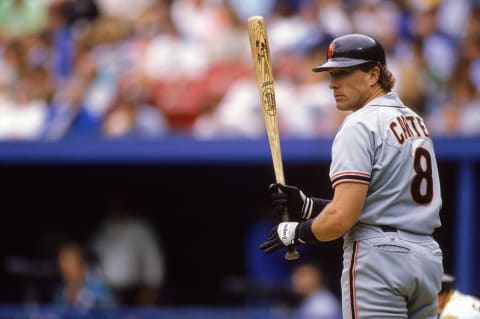
MLB still allowed transactions in early 1990
As a result, in January of 1990, MLB transactions still were still taking place, unlike the 2021-2022 offseason we are in now.
In fact, some fairly big moves happened from January to March of 1990. The Atlanta Braves signed 21-year MLB veteran Darrell Evans to a contract (but he never played in the majors again). The Detroit Tigers signed first baseman Cecil Fielder to a free agent deal after he spent a season in Japan. In 1990, he ended up coming in second in AL MVP voting.
Among many other moves, future Hall of Famer Gary Carter officially left the New York Mets and signed with the San Francisco Giants. The Giants also signed former All-Star closer Dan Quisenberry to a deal. Former All-Star pitcher Dan Petry signed with the Detroit Tigers for his second stint with the team. Former All-Star pitcher John Candelaria signed with the Minnesota Twins.
But stakes were still high in the 1990 labor negotiations.
The main topics of discussion included free agency, arbitration, and revenue sharing.
For free agency, in the late 1980s, it was determined that MLB owners were colluding with each other to suppress salaries. That was determined by two separate arbitrators. A prime example of this was with former All-Star and MVP candidate Andre Dawson. The future Hall of Famer took a pay cut of more than 50 percent in 1987 when he had to give a blank check to the Chicago Cubs to play for them. He won the 1987 NL MVP Award.
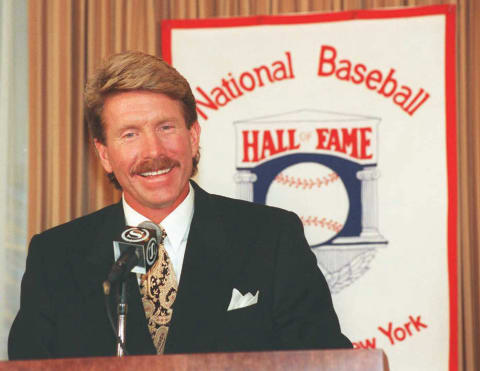
MLB saw a huge influx in money in the late 1980s
After these arbitrators ruled as such (as late as 1988), salaries started to increase and nine players signed multi-year deals for $3 million or more per season. In 1987, the highest played MLB player was Philadelphia Phillies’ third baseman Mike Schmidt, who made $2.13 million. The arbitrators also said that the owners had to pay the MLBPA as much as $100 million in lost wages due to the collusion.
Owners saw the lockout coming as, starting in 1989, they sometimes wanted to include clauses in player contracts that stipulated that they would not be paid in the event of a lockout.
Television deals also skyrocketed in the 1980s. NBC’s contract for The Game of the Week expired at the end of the 1989 season and starting in 1990, CBS would carry The Game of the Week and ESPN started their coverage of MLB games. They initially picked up Sunday Night Baseball (which still goes on to this day) as well as Tuesday Night Baseball, Wednesday Night Baseball, and Friday Night Baseball.
These two deals combined to be around $1.5 billion over the next four years, which was more than double of NBC’s previous deal with MLB. That meant that each of the 26 MLB teams at the time would get over $15 million per season from these deals.
With all of these things that changed since the last deal, there was a lot to discuss.
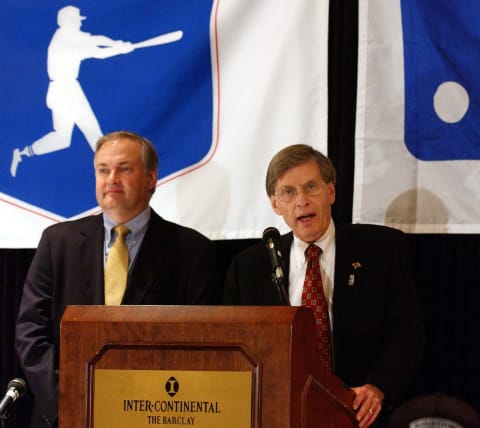
Here is roughly what each side wanted, starting with the owners.
- MLBPA members (players) would be guaranteed to make 48 percent of all ticket sales and revenue from national and local media (TV and radio). This was roughly 82 percent of the owners’ total revenue
- A pay-for-performance system. Depending on how many years you had in the majors (rookie through year six), you would be paid depending on what stats you had. This would all be lumped together and each team would pay 1/26th of it. However, there would be no multi-year deals and no arbitration.
- A salary cap. Teams would be able to sign whomever they wanted, as long as they stayed under a salary cap.
Here is what the players wanted:
- Arbitration starting at two years of service time (this is something they still have not gotten as they are hoping to get it in the current negotiations)
- Minimum wage be increased from $68,000 per year to $125,000 per year
- Continuation of an increase of contributions made by owners to players’ pension and health insurance. They wanted this to be one-third of the total TV revenue received from the All-Star Game, playoffs, and World Series. This was roughly $83 million at the time.
- Language protecting owners from colluding against free agents and triple the amount in restitution that the arbitrators said ($100 million)
- Increasing roster from 24-man to 25-man
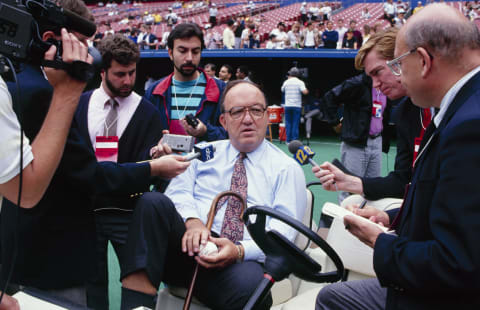
MLB and the MLBPA did not agree on anything until the Commissioner stepped in
Negotiations started after Thanksgiving in 1989 and until mid-February (two weeks before Spring Training), little to no ground was made. It was then (in mid-February), newly minted Commissioner Fay Vincent (who just became Commissioner after the death of new Commissioner A. Bartlett Giamatti’s death in September 1989) stepped in with negotiations.
Vincent, realizing that Spring Training was coming and acting in the “best interests” of MLB, started to make concessions for the owners, which they did not want, and ended up resenting him for until they made him resign in 1992.
Vincent’s proposals included:
- $75,000 minimum wage for rookies, $125,000 for second-year players, and $200,000 for third-year players.
- A 75 percent cap on the increase of salaries in arbitration
- A 2-year commission that would study revenue sharing
- Reopening of the 4-year CBA after two years
- No increase (or decrease) in player benefit plan
After Vincent made this proposal, the owners dropped their revenue-sharing plan, pay-for-performance plan, and salary cap (but the latter was a hot-button issue in the next CBA).
However, the MLBPA was not satisfied because the owners introduced new things they wanted.
They included:
- No free agency
- Prohibiting multi-year contract comparisons in arbitration
- Eliminating the maximum salary cuts that were in place for arbitration-eligible players (20 percent drop in one-year deals and 30 percent drop in two-year deals)
The owners saw how angry the MLBPA got over those three proposals that they scrapped them within a day.

In 1990, MLB owners delayed Spring Training
On February 15, though, owners announced that they would not allow Spring Training to start on time because, with the owners essentially taking most of their demands off the table, the MLBPA went for the jugular and tried to hammer down the idea of dropping arbitration from three years to two.
With negotiations stalling on that point and the player pension fund, on March 8, with Spring Training games being canceled by the day, Vincent proposed opening camps as long as the Players agreed not to strike later in the season. They turned this down.
Eventually, with the arbitration hangup between two and three years, Vincent proposed a compromise where a player would be eligible for arbitration if they had two years and 140 days of service time. This was negotiation was roughly agreed upon.
Vincent’s proposal was slightly different than what they agreed upon as they made it where the top 17 percent of players between two and three years would be eligible for arbitration, as long as they had been with the club for 86 games of the third season. This is still in place today and is commonly known as the “Super Two.”
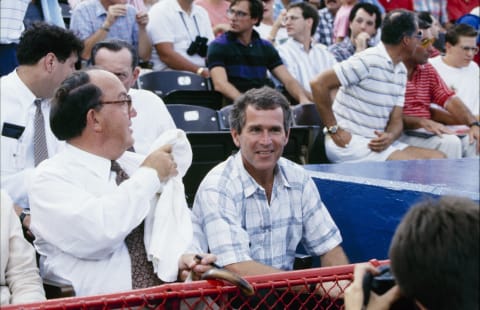
The new CBA was agreed on by MLB owners and the MLBPA in late March
A deal was finally agreed upon on March 19, 1990, meaning that Spring Training was virtually wiped out. The agreement included:
- The “Super Two” clause
- An increase in the benefit fund to player pensions and insurance to $55 million per season
- Minimum wage increased from $68,000 to $100,000
- Rosters increases from 24 players to 25 for the start of the 1991 season
- Language prohibiting collusion was put in place
- Either side can reopen negotiations on a four-year CBA after three years
- A six-member committee was established to investigate the best way forward with revenue sharing
As a result of this being agreed upon late in Spring Training, they decided to abbreviate Spring Training. The regular season was slated to start on April 2 so they pushed it back one week to April 9.
However, this would have meant that, still, only 158 games would be able to be played so they added three days on to the season. Vincent was able to work out an agreement with CBS, who was in their first season of televising the playoffs and World Series but had been the radio home for the postseason since 1976, on the postseason to push it back so that all 162 games could be played.
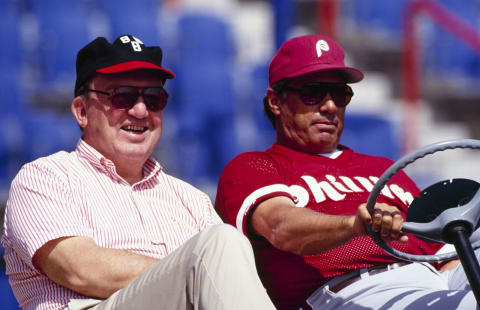
Ramifications of the 1990 MLB lockout
The 1990 CBA was widely viewed as a win for the MLBPA, which is something that one of the chief negotiators for the owners in 1990, Milwaukee Brewers owner Bud Selig, and a few other owners who supported Selig, did not forget.
The owners forced Fay Vincent out of his office in 1992 and Selig himself became the Acting Commissioner until he was named the full-time Commissioner in 1998.
They didn’t forget at the next labor negotiations either, which is why they dug their heels into the flesh of the MLBPA in the 1994-1995 strike.
They never backed down on their proposals even when President Bill Clinton and federal arbitrators intervened. Eventually, future Supreme Court Justice Sonia Sotomayor ruled in favor of the MLBPA. For the next CBA put in place in 1997, it was largely viewed as another win for the MLBPA.
That’s why the start of the 2002 MLB season started without a CBA. The MLBPA imposed a deadline of August 30 until they went on strike. After Selig cried poor with the MLB owners claiming that they lost over $500 million in 2001 alone and the MLBPA fought steroid testing, they agreed upon a new CBA just a few hours before games were to start on August 30.
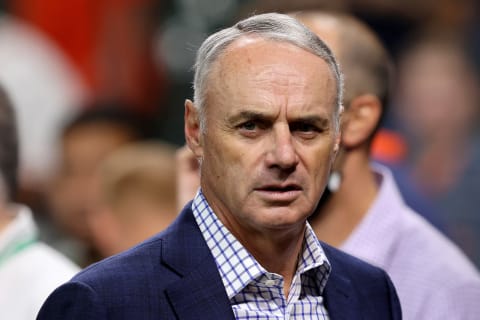
How could this impact the MLB lockout today?
By and large, a lot of the hangups from 1990 are hangups in the current negotiations in the MLB lockout.
Reportedly, the MLBPA wants the arbitration time pushed back to two years and, now, they want free agency after five years.
The MLBPA is also not happy because, in recent years, there has been rumblings of collusion between the owners on free agents. Before this year (e.g. a week before the lockout), most of the free agent signings often came in late January or early February, when players start to get desperate to sign.
The MLBPA also wants anti-taking measures, or essentially, a salary floor. In 1990 and 1994, a salary cap from the owner’s end of negotiations was the death of their negotiations.
Owners, according to Commissioner Rob Manfred, made numerous concessions, like a universal DH, a draft lottery system (part of anti-tanking), elimination of a draft pick after a qualifying offer, increases to the minimum salary, and increase to the competitive balance tax threshold. MLB also wants expanded postseason.
Next. A brief history of MLB's websites. dark
The lockout case of 1990 shows that, despite not agreeing on a new CBA until late March, a full 162-game season can happen but after that, both sides could be in a world of hurt financially and with fans.